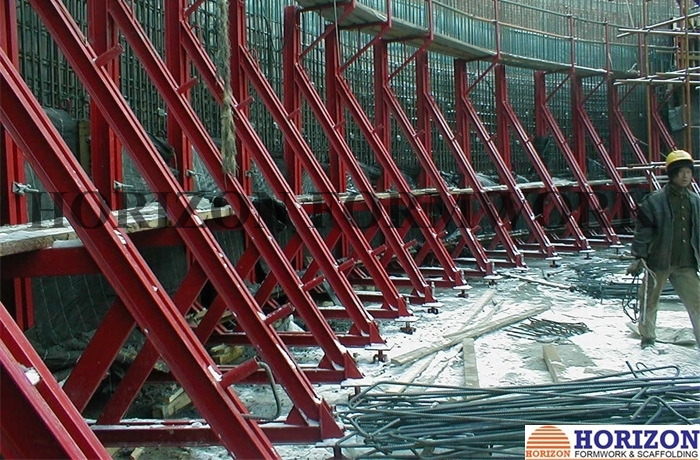Jul . 23, 2024 14:34 Back to list
Innovative Techniques for Using Flexible Wall Shuttering in Modern Construction Projects
The Evolution and Benefits of Flexible Wall Shuttering in Construction
In the realm of modern construction, efficiency, adaptability, and innovation are paramount. One of the most significant advancements that embody these principles is flexible wall shuttering. As construction techniques evolve, the demand for materials and methodologies that can easily adapt to various architectural designs has led to the adoption of flexible shuttering systems. This article explores the evolution, benefits, and applications of flexible wall shuttering in contemporary construction projects.
Understanding Flexible Wall Shuttering
Flexible wall shuttering systems are innovative forms of shuttering used to form walls and other structural elements in construction. Unlike traditional rigid formwork, flexible shuttering allows for varied shapes and contours to be achieved, facilitating the construction of curved or uniquely designed structures. Typically made from materials such as engineered wood, plastic, or metal, these shuttering systems can be manipulated to suit specific design requirements.
Historical Context
The shift from traditional rigid shuttering to flexible options can be traced back to the growing complexity of modern architectural designs. As architects began to explore organic shapes and non-linear forms, the limitations of conventional formwork became apparent. Traditional methods often required extensive labor, high material costs, and considerable time for setup and dismantling. Consequently, the construction industry began seeking more versatile solutions to streamline processes while maintaining aesthetic appeal.
Benefits of Flexible Wall Shuttering
1. Versatility and Design Freedom One of the most significant advantages of flexible wall shuttering is its ability to accommodate a wide range of designs. Architects can experiment with innovative shapes, curves, and angles without the constraints imposed by traditional formwork. This flexibility opens the door to more creative architectural possibilities.
flexible wall shuttering

2. Cost-Effectiveness Although the initial investment for flexible shuttering may be higher than conventional systems, the long-term savings are substantial. Flexible systems can be reused for multiple projects, reducing the need for continuous procurement of new materials. Additionally, they often require less labor for installation and removal, further driving down costs.
3. Reduced Construction Time The adaptability of flexible shuttering allows for quicker setup and dismantling, which translates into faster project completion times. This efficiency is particularly beneficial in large-scale or time-sensitive construction projects, where delays can significantly impact budgets and timelines.
4. Improved Quality of Work Flexible wall shuttering contributes to higher quality finishes. The ability to create precise shapes ensures that concrete surfaces are smoother and more uniform, reducing the need for extensive post-construction finishing work. Moreover, the tightness of the form ensures that there are minimal leaks or inconsistencies during the pouring of concrete.
5. Sustainability The construction industry is increasingly focused on sustainable practices. By utilizing reusable flexible shuttering systems, the amount of waste generated is significantly reduced. Additionally, many flexible shuttering materials are designed with eco-friendly approaches, such as recyclable plastics or sustainably sourced wood.
Applications in Modern Construction
Flexible wall shuttering has been successfully implemented in various construction projects, ranging from commercial buildings and residential homes to bridges and public infrastructure. Notable architectural masterpieces renowned for their complex geometries often rely on this innovative formwork solution. Landmark buildings like the Guggenheim Museum in Bilbao and the Heydar Aliyev Center in Baku exemplify how flexible shuttering has allowed architects to push boundaries and achieve visionary designs.
Conclusion
Flexible wall shuttering represents a pivotal development in construction technology, catering to the growing need for efficiency, creativity, and sustainability in building practices. As the industry continues to evolve, the adoption of such innovative solutions will play a crucial role in shaping the future of architecture and construction, allowing for an exciting era of design possibilities and enhanced construction methodologies. Embracing flexible wall shuttering is not just about keeping pace with contemporary trends; it’s about making a proactive choice for a more adaptable and sustainable future in construction.
-
Expert Ringlock Scaffolding: Durable, Safe, Efficient Solutions
NewsAug.28,2025
-
Ringlock Scaffolding: Strong, Safe & Efficient Solutions
NewsAug.27,2025
-
OEM Column Formwork: Circular, Curved & Inclined Solutions
NewsAug.26,2025
-
Premium Scaffolding Jacks: Stable, Adjustable & Durable
NewsAug.25,2025
-
OEM Wall Formwork & Shuttering: Flexible & Curved Solutions
NewsAug.24,2025
-
Adjustable Heavy Duty Props for Slab Formwork | Strong & Reliable Support
NewsAug.23,2025